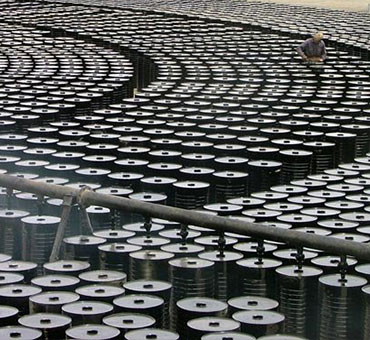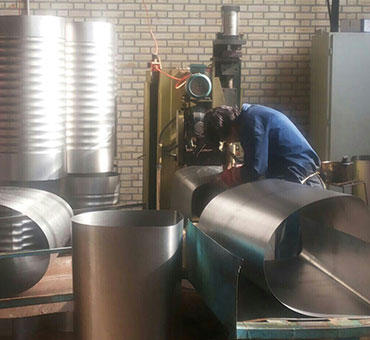Limestone
Limestone is a sedimentary rock which is often composed of the skeletal fragments of marine organisms such as coral, foraminifera and molluscs. Its major materials are the minerals calcite and aragonite, which are different crystal forms of calcium carbonate (CaCO3).
About 10% of sedimentary rocks are limestones. The solubility of limestone in water and weak acid solutions leads to karst landscapes, in which water erodes the limestone over thousands to millions of years. Most cave systems are through limestone bedrock.
Limestone has numerous uses: as a building material, an essential component of concrete (Portland cement), as aggregate for the base of roads, as white pigment or filler in products such as toothpaste or paints, as a chemical feedstock for the production of lime, as a soil conditioner, or as a popular decorative addition to rock gardens.
To make Portland Cement—the most common type of Cement—powdered Limestone is heated in a rotary kiln. As a source of calcium, it joins with powdered clay to produce a product called clinker, which is then ground with a source of sulfate, like gypsum. It is mixed with water, sand and crushed rock to create concrete.

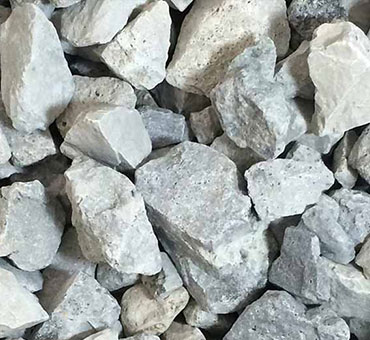
Gypsum
Gypsum is a soft sulfate mineral composed of calcium sulfate dihydrate, with the chemical formula CaSO4•2H2O.[3] It is widely mined and is used as a fertilizer, and as the main constituent in many forms of plaster, blackboard chalk and wallboard.
A massive fine-grained white or lightly tinted variety of gypsum, called alabaster, has been used for sculpture by many cultures including Ancient Egypt, Mesopotamia, Ancient Rome, the Byzantine Empire and the Nottingham alabasters of Medieval England. Mohs scale of mineral hardness, based on scratch hardness comparison, defines hardness value 2 as gypsum. It forms as an evaporite mineral and as a hydration product of anhydrite.
Gypsum plays a very important role in controlling the rate of hardening of the cement. During the cement manufacturing process , upon the cooling of clinker, a small amount of gypsum is introduced during the final grinding process . Gypsum is added to control the “setting of cement”.
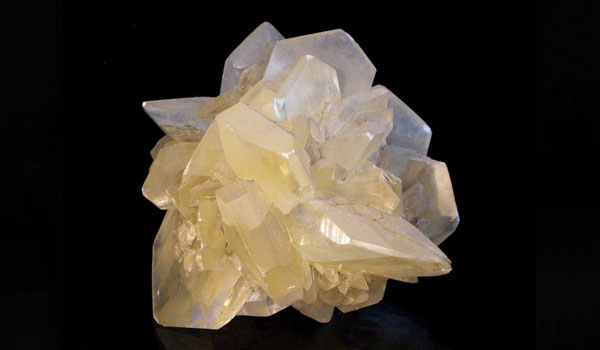
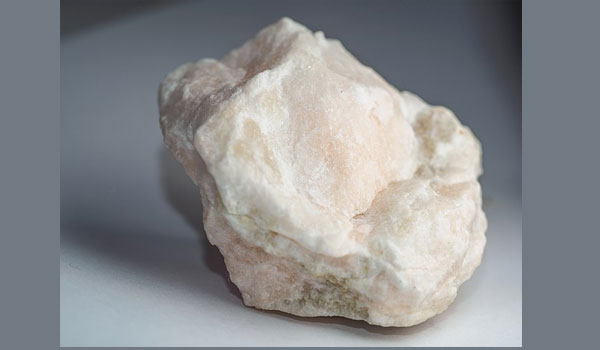
Clinker
Clinker consists of various calcium silicates including alite and belite. Tricalcium aluminate and calcium aluminoferrite are other common components. These components are often generated in situ by heating various clays and limestone.[1]
Portland cement clinker is made by heating a homogeneous mixture of raw materials in a rotary kiln at high temperature . The products of the chemical reaction aggregate together at their sintering temperature, about 1,450 °C (2,640 °F). Aluminium oxide and iron oxide are present only as a flux to reduce the sintering temperature and contribute little to the cement strength. For special cements, such as low heat (LH) and sulfate resistant (SR) types, it is necessary to limit the amount of tricalcium aluminate formed.
The major raw material for the clinker-making is usually limestone mixed with a second material containing clay as source of alumino-silicate. Normally, an impure limestone which contains clay or silicon dioxide (SiO2) is used.
The calcium carbonate (CaCO3) content of these limestones can be as low as 80%. Second raw materials (materials in the rawmix other than limestone) depend on the purity of the limestone. Some of the second raw materials used are: clay, shale, sand, iron ore, bauxite, fly ash and slag. The clinker surface and its reactions in different electrolytic solutions are investigated by scanning electron microscope and atomic force microscopy.
Portland cement clinker is ground to a fine powder and used as the binder in many cement products. A little gypsum is sometimes added. It may also be combined with other active ingredients or chemical admixtures to produce other types of cement including: ground granulated blast furnace slag cement.

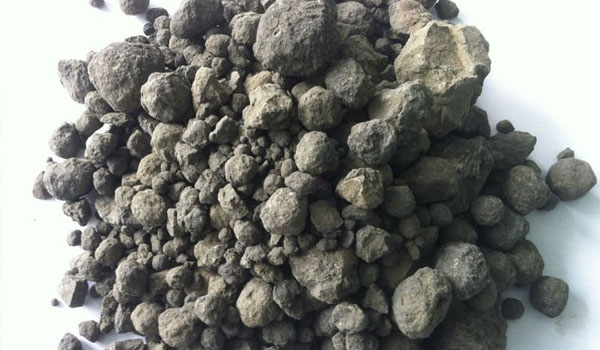
Cement
A cement is a binder, a substance used for construction that sets, hardens, and adheres to other materials to bind them together. Cement is seldom used on its own, but rather to bind sand and gravel (aggregate) together. Cement mixed with fine aggregate produces mortar for masonry, or with sand and gravel, produces concrete. Cement is the most widely used material in existence and is only behind water as the planet's most-consumed resource.
Cements used in construction are usually inorganic, often lime or calcium silicate based, and can be characterized as either hydraulic or non-hydraulic, depending on the ability of the cement to set in the presence of water (see hydraulic and non-hydraulic lime plaster).
Non-hydraulic cement does not set in wet conditions or under water. Rather, it sets as it dries and reacts with carbon dioxide in the air. It is resistant to attack by chemicals after setting.
Hydraulic cements (e.g., Portland cement) set and become adhesive due to a chemical reaction between the dry ingredients and water. The chemical reaction results in mineral hydrates that are not very water-soluble and so are quite durable in water and safe from chemical attack.
This allows setting in wet conditions or under water and further protects the hardened material from chemical attack. The chemical process for hydraulic cement found by ancient Romans used volcanic ash (pozzolana) with added lime (calcium oxide).
Portland cement is by far the most common type of cement in general use around the world. This cement is made by heating limestone (calcium carbonate) with other materials (such as clay) to 1450 °C in a kiln, in a process known as calcination that liberates a molecule of carbon dioxide from the calcium carbonate to form calcium oxide, or quicklime—which then chemically combines with the other materials in the mix to form calcium silicates and other cementitious compounds. The resulting hard substance, called 'clinker', is then ground with a small amount of gypsum into a powder to make ordinary Portland cement, the most commonly used type of cement (often referred to as OPC).
Portland cement is a basic ingredient of concrete, mortar, and most non-specialty grout. The most common use for Portland cement is to make concrete. Concrete is a composite material made of aggregate (gravel and sand), cement, and water. As a construction material, concrete can be cast in almost any shape, and once it hardens, can be a structural (load bearing) element. Portland cement may be grey or white.


Bitumen
Bitumenis the heaviest material obtained from the fractional distillation process of crude oil. It is Black in colour and possesses water proofing &adhesive properties. This material is further treated and blended to make different grades of paving grade bitumen. i.e. Bitumen 80/100 (VG-10) , Bitumen 60/70 (VG-30) and Bitumen 30/40 (VG-40) and meets IS 73-2006 specification.
Our Strengths in Bitumen Drummed : Drummed Bitumen stocked in UAE and supplied to various destinations. The main grades are: Bitumen 80/100 (VG-10), Bitumen 60/70 (VG-30) and Bitumen 30/40 (VG-40) the grade Bitumen 30/40 is exclusively produced only on special requirements. Its major application is in the airport runway constructions. Star Bulk also provides various types of Bitumen:
Penetration Bitumen ( 100/120)
Blown Bitumen (R90/15)
Blown Bitumen (R85/25)
Cutback Bitumen (MC-250)
Penetration Bitumen (40/50)
Quality Control :A Rigorous Quality Control Mechanism whereby Bitumen is tested by SGS/Geo chem and Cotecna as per international standard requirements, and Test reports provided to the customers.
Marketing :A Nationwide network of marketing offices and supply locations thus ensuring efficient distribution of the product at locations closer to the customer. Bitumen is supplied in Bulk and Packed forms.
bulck bitumen
packed bitumen:Bitumen is packed is NEW Steel Drums ( 180 KG as well as 150 KG Drums), Jumbo Bags, Flexi Bags, Palletized. Altnerative of Bulk Bitumen is Bitumen in Jumbo bags. Kindly click the link here for checking on Jumbo Bags.
